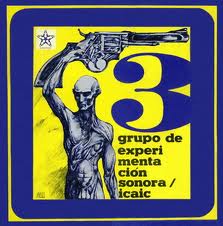11- Cuban music in the 20th century (1959-1980).

Following the triumph of the Revolution, Cuban music continued its evolution, based on purely Cuban components. This process brought about changes in the musical sphere. Existing genres of Cuban music, previously unpopular, such as symphonic music and choirs, were disseminated. It was during this period that the National Symphony Orchestra was founded. New expressions emerged in Cuban music, and musical experiments took place, based on percussion, thus achieving certain transformations in musical sound.
The 1960s were marked by the Havana Musical Theater, whose representatives included Alfonso Arau, Tony Taño, and Bobby Carcasés. Vocal quartets enjoyed a significant moment in Cuban music: Los Bucaneros (1960), Los Modernistas (1960), Los Zafiros (1962), and a legion of vocal groups proliferated throughout Cuban music.
During this decade, new rhythms were created in Cuban popular music that revolutionized popular dance, such as Dengue, Changüí-Son, Pacá, Mozambique, and Pilón. It was in the late 1960s and early 1970s that the Nueva Trova Movement emerged in Cuban songwriting, strongly represented by important performers and composers of Cuban music such as Silvio Rodríguez, Pablo Milanés, Noel Nicola, Sara González, and Vicente Feliú, among others.
In 1967, the Varadero Popular Song Festival was organized and held. The Cuban Modern Music Orchestra was founded, a favorite among young people of this era. Directed by maestro Armando Romeo, it included many talented young musicians.
In the 1970s, the ICAIC Sound Experimentation Group emerged, leaving us with notable works and film themes. Cuban musical figures such as Leo Brower, Carlos Fariñas, and Juan Blanco also experimented with electroacoustic music, a musical trend of this period. Songo and salsa were also created.
It is a period in which many Cuban musical orchestras proliferated, both classical and belonging to popular dance music, among the latter we can mention: Estrellas Cubanas, the Conjunto Estrellas de Chocolate, Pacho Alonso and his Pachucos, Orquesta Revé, the duo Los Compadres, Los Van Van de Juan Formell and Irakere, by maestro Chucho Valdés, among many others.
Groups also emerged that became popular, especially among Cuban youth: Manguaré, Moncada, and Mayohuacán, with productions based on Latin American political and folk songs and with a clear emphasis on Cuban Son.
Likewise, during this period, cultural institutions and organizations were established with the firm goal of disseminating and developing music education in the country at all educational levels. These included the founding of the National School of Art (120th Street between 9th and 13th Streets, Cubanacán, Playa, Havana) and the Ministry of Culture (2nd Street between 11th and 13th Streets, Vedado, Plaza de la Revolución, Havana). Festivals and competitions emerged, such as the National Choir Festival, which currently takes place annually within the framework of Cuban music.








